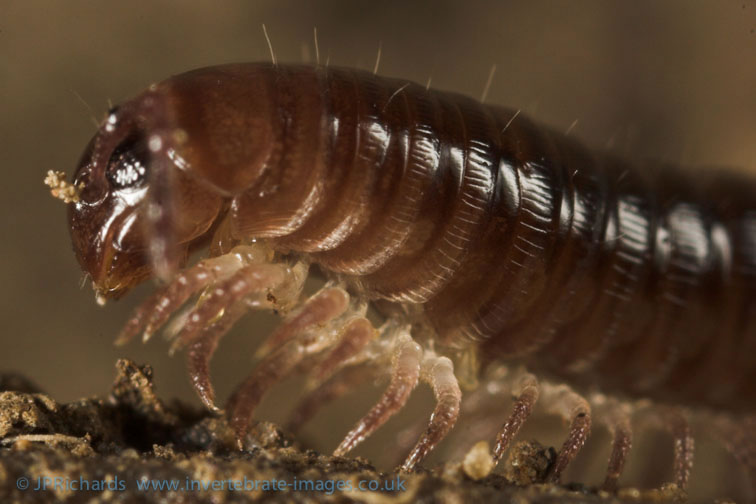Julus scandinavius Latzel, 1884
Status:
GB IUCN status: Least Concern
ID Difficulty
Identification
This large dark millipede with a pointed projecting tail (telson) may be confused with several morphologically similar species, including Ophyiulus pilosus, Leptoiulus kervillei or Tachypodoiulus niger.
Identification is best undertaken by examination of male specimen, in which the first pair of legs are tiny (difficult to see) and second pair bear a distinct long flattened projection.
Distribution
This is a widespread species across Britain and Ireland but, although common in much of the country, it is surprisingly scarce in the extreme south east and central southern England.
Julus scandinavius is also a common species in central Europe but it is absent from most of France including the channel coasts (Kime, 1999). It has been introduced to the USA (Jeekel, 1973).
Habitat
It has been collected from a wide range of habitats including grasslands, wetlands and sand dunes but analysis of the recording scheme habitat data suggests a strong association with woodland. It is chiefly a woodland species in continental Europe (Kime, 2004; Pedroli-Christen, 1993). It appears to be less synanthropic than Ophyiulus pilosus and shows a strong negative relationship with cultivated land and waste ground. Blower (1985) states that it has a preference for more acid soils and, although it does occur in calcareous grassland, Kime (1995) reports it is never found in limestone woodlands in Europe. Although below the significance threshold for a strong association, the habitat analysis does suggest a preference for non-calcareous soils.
Phenology
Animals take three years to reach maturity but after breeding in the spring both sexes die and hence there are few adults around by late summer (Blower, 1979). However, there are some records of adults from all months of the year.
This species account is based on Lee (2006).
Links
MilliBase - Global catalogue of Millipedes: https://millibase.org/aphia.php?p=taxdetails&id=952395







